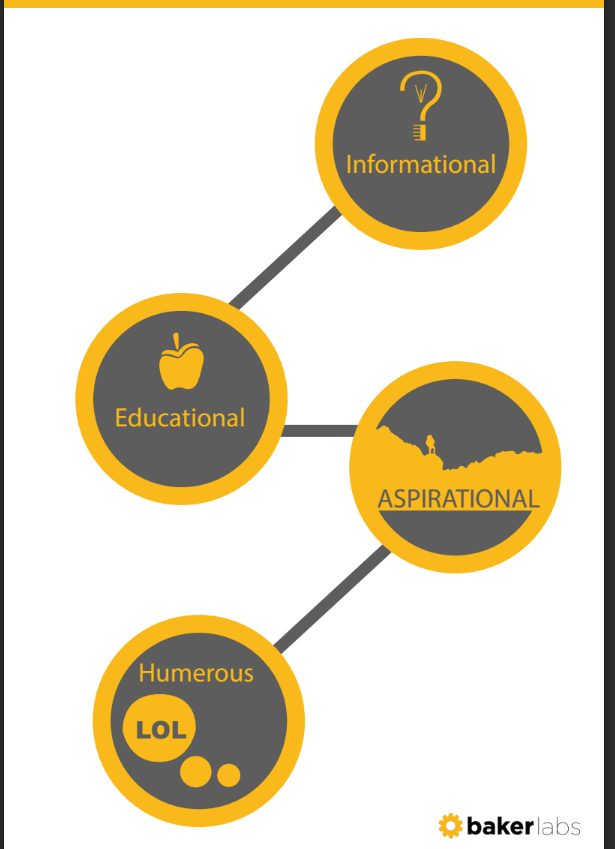When writing blog post content or creating content for posting on social media, most of us have a primary type of content we lean towards as our go to type. It’s often the type we are most interested in consuming, but the truth is that to be successful marketers, we need to create content that appeals to our personas as they move through their buyer’s journey, not just the content we personally find interesting. There are four main categories of content that when used, are key to a successful inbound marketing strategy.
4 Categories of Content for Inbound Marketing

INFORMATIONAL
This is one of the most common types of content. Informational content can be used in blog posts and in social media to share who, what, when, where and why.
These are posts like:
- We’ll be at the NASCA 2016 trade show in October, stop by our booth and say hello!
- We just won best construction company based on a reader poll. Thank you for your votes!
- We are open late tonight – come on in!
- Tim, Rhonda and Jennifer were all recognized by the AATC for Superior Performance, a rating only 150 have – great job guys!
Your newsfeed is full of these informational updates. These posts are easy to do and can have good short-term impact. The posts I used in my example are communicating information that is important to your company, important to your employees and have value. People expect your blog and social media to have recent and relevant information, and this a great way to make sure they are updated often. However, if this is all you do, expect limited results because of your limited time and marketing investment. By only posting these types of updates, you limit your engagement and as news feeds become more and more algorithm driven (think Google search), merely providing status updates won’t be enough.
EDUCATIONAL
When you are in the process of buying a new service or product, you know you have a problem and need help, but often aren’t actually sure of the solution. Your prospective clients and customers have the same issues in their buyer’s journey: I have a problem and I’m searching for solutions to solve it. Inbound marketing is a great fit for creating educational content that others can learn from. This type of content helps your readers learn about various solutions to their problem, including answering common questions and helps them feel like they have more control over their problem.
Educational content also positions you and your company as a subject matter expert, creating authority and trust which can be a big differentiator in the sales process. With a properly executed inbound marketing plan, your visitors will be better informed and become leads when they are ready because they’ve read, watched and learned from you and your competitors. When they do talk with you on the phone or at an appointment, they will be much closer to making a decision to convert because of the information they’ve received.
ASPIRATIONAL
It is one thing to read about the steps a company will take to solve your problem, it’s another thing to read a story about someone they actually helped. Aspirational content is about who we want to be or things we want to do and it showcases what the readers future could be like. When writing aspirational posts based on our clients’ successes, we start with a basic story arc that creates awareness of the problem, the solution, and the company. We talk about what someone loves to do, what is inhibiting them from doing it, and what a solution gets them back to doing. For example, a basic aspirational post for a medical group might be:
Tim loves to hike in the Smoky Mountains and he’s hiked up to the summit of Mount LeConte for a great view of the leaves changing color every October for over 20 years in a row. However, severe leg pain has recently stopped him from being able to walk for the four hours needed to get to the top. He was disappointed to miss out on his annual trip, so he started searching for solutions. He was able to have a medical procedure to treat the issue causing his leg pain. Now that he’s back on his feet, he feels great and can’t wait to get to the top of Mt LeConte this fall.
The story doesn’t have to be a testimonial, but should be informed by actual or similar results you’ve accomplished. When you tell a story like this, someone who has similar problems can put themselves in the shoes of the person in the story and begin to understand how they could have a similar story if they got help.
HUMOROUS
People love to laugh, but as we’ve all experienced, what I find funny, you may not, and vice versa. Humor is a tricky content type because it is very subjective and must be handled carefully, otherwise your company may experience a social media backlash. All warnings aside, when you are able to take the jokes, memes, funny videos or images and include them in your social media content, it can have great results in increasing engagement and awareness.
This meme above is funny to dog owners, because as the owner of a rambunctious Chocolate Labrador Retriever named Habersham, I’ve experienced some or all of these things and so have most dog owners. The key to this is using it sparingly, the point of investing in digital and inbound marketing isn’t to become the source of laughs for your clients and customers but instead to grow your authority, trust and ultimately increase your brand awareness and revenue.
Until Next Time
At the end of the day, your content type mix is going to change over time and will change based on your marketing goals, client and customer interests and what’s been successful in the past. Branch out from your normal content and I think you’ll be surprised by the results.
Not sure if you’re producing the right mix of content? Let us help. Sign up for a free inbound marketing assessment. You’ll get expert feedback on what you’re currently doing, and ideas for your future endeavors.



